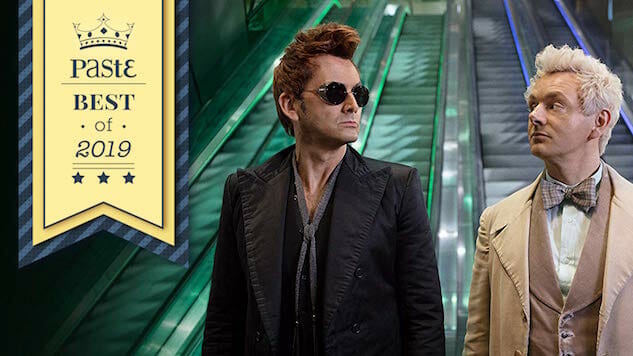
The miniseries has officially made a comeback (sometimes referred to as a Limited Series these days), and we couldn’t be happier about it. The short format gives us novelistic storytelling that often makes for a great binge watch, or at the very least, a finite viewing commitment. And in this Peak TV Era, that’s an important feature. 2019 was an outstanding year for miniseries, several of which pushed the form in new and experimental directions, as well as a few that will be considered all-time greats. The list is dominated by HBO and Netflix, who have been ramping up their miniseries content, but our other selections are well worth seeking out for their worthy contributions to a great year in television.
Speaking of which, be sure to check out our lists of the 50 best TV shows of 2019 as well as our picks for the best episodes .
10. State of the Union, SundanceTV
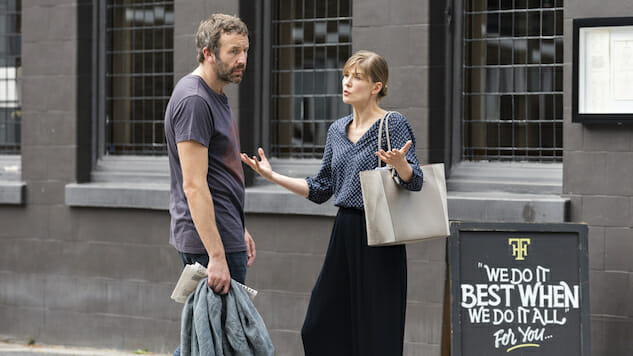
A sharp, realistic, two-person character study written by Nick Hornby and directed by Stephen Frears, State of the Union consists of ten episodes that are approximately ten minutes each. You can watch the whole series in less time than it will take you to watch one and a half episodes of Game of Thrones. Louise (Rosamund Pike) and Tom (Chris O’Dowd) meet up in the pub right before going into their weekly marriage therapy sessions. What has happened to their relationship and why they need therapy will be revealed over the course of the ten episodes. It’s a painful, honest and often very funny look at what goes into a marriage. —Amy Amatangelo and Amy Glynn
9. Primal, Adult Swim
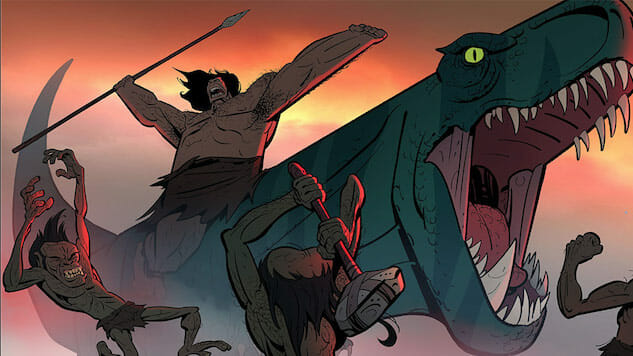
It’s so easy to think of the anachronistic caveman-dinosaur relationship as one between a boy and his dog. Chuck Jones’ first Daffy Duck cartoon introduced Casper and Fido, while Alley Oop has been riding his dinosaur since the ‘30s. Even Winsor McCay’s landmark animated character Gertie the Dinosaur was domesticated.
This collected cultural idea, from McCay’s pioneering personality work to the ubiquitous partnership between man and beast, is what Genndy Tartakovsky channels in his life-or-death Adult Swim show Primal. Lovely animation and heightened action only serve to illuminate the show’s grounded central premise: life is hard and it’s better together. Even if it takes stretching history millions of years, Primal finds an innate truth buried deep in the fossil record.
The beloved animator behind Samurai Jack and Clone Wars returned to TV after some scattered pilots and a Hotel Transylvania trilogy. What he brought with him is everything fans have come to expect from a creator whose legacy is filled with spartan storytelling and aesthetic elegance. Despite Primal’s Slipknot-but-if-cavemen font, its most pressing use of its title isn’t raw, base, animal violence, but instinctual facets of life. Things like survival, purpose, and companionship. How best to get at that than silent animation, where slapstick and gore hold equal weight?—Jacob Oller
8. Years and Years, HBO
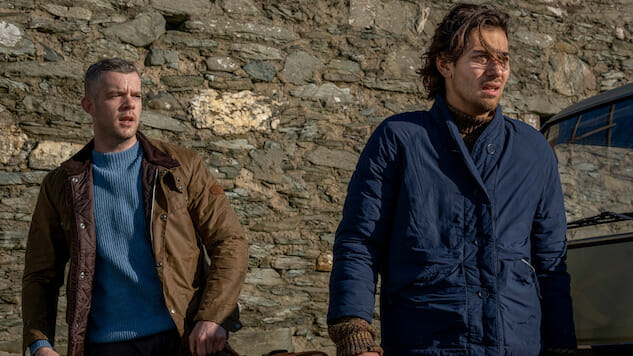
Russell T. Davies’ UK series came to HBO with very little fanfare, which is unfortunate because it deserves your attention. It’s a compelling, if imperfect, look at what life might be like in the next 15 years, as the show cruises through a number of proposed (and likely) world events through the lens of one British family. An outstanding cast helps sell the show’s dystopian vision, giving it an exceptional amount of heart. But Davies also keeps all of the tech and politics and media of the future feeling grounded in the possible. Years and Years is arresting television, with an outlandishly oversized score that pulls you in fully to a story with shocking events and the familiar mundanity that follows them. Despite the erosion of freedoms for these formerly comfortable middle-class westerners, it still feels strangely hopefully, and most of all, embraces the idea of resilience even in the face of extraordinary change. —Allison Keene
7. Les Misérables, PBS
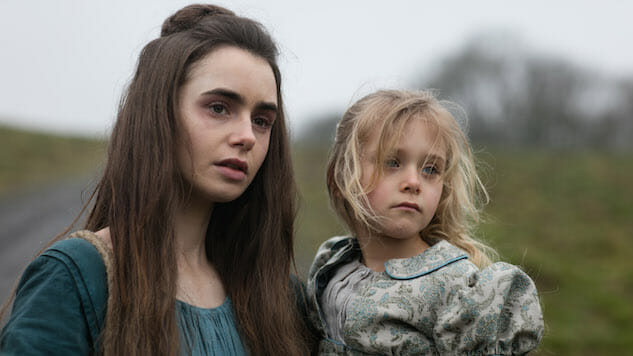
Written by Victor Hugo and published in 1862, Les Misérables is known as one of the great novels of the 19th century. And as the title implies, it’s all about misery, of a sort that’s difficult for most of us to imagine. The most recent retelling of the novel—which many people familiar with the story through the stage musical and its screen adaptations may not have actually read—is brought to you by Masterpiece, and it lives up to the name. There have been many prior versions of the tale, and most of them condense it to two or three hours. The beauty of turning Les Misérables into a miniseries is that we get a long view of the characters, finding new sides to well-known figures—Lily Collins’ Fantine, Dominic West’s Jean Valjean, David Oyelowo’s Javert—and finding depth in those, like Olivia Colman’s Madame Thénardier, who often come across as one-note. This Les Misérables may be the best one yet. —Keri Lumm
6. Our Planet, Netflix
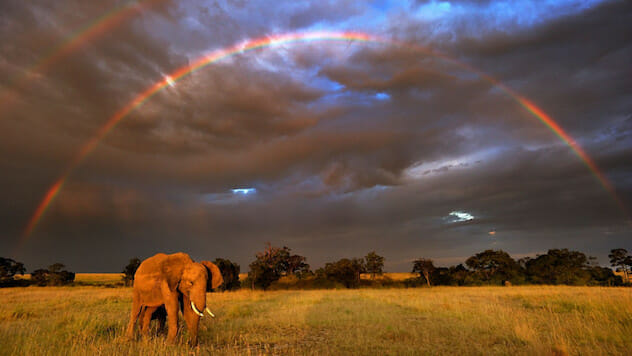
Coming from those who have helmed previous installments of the Planet Earth series, the engrossing Our Planet is specifically a call for conservation. The fantastic globe-trotting nature documentary keeps to a general pattern in each episode: introduce something wonderful, educate us about it, and then explain why it’s dying or being put in peril because of climate change. Our Planet holds back a little in terms of showing the demise of charismatic megafauna, a long-time staple of nature docs, because its desire is to make us feel connected enough to this planet to do something about the problems facing it (and ultimately us). But there is certainly plenty to make us feel queasy about the stakes. Though it is a little more overt in terms of an agenda than its Planet Earth (and Blue Planet) predecessors, Our Planet is similar in that it utilizes the most cutting-edge camera technology to capture this world in all of its splendor. It is absolutely breathtaking—and incredibly urgent. —Allison Keene
5. Good Omens , Amazon Prime
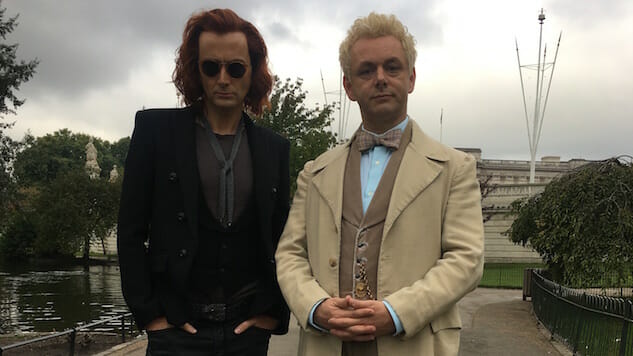
Neil Gaiman’s passionate fans can safely dive into this adaptation of Good Omens; since the author served as showrunner and handle the script himself, his vision comes through very much intact. The six-part series follows the angel Aziraphale (Michael Sheen) and the demon Crowley (David Tennant) as they team up to avert the apocalypse. It has sensibilities that recall the work of Terry Gilliam and the films of Powell and Pressburger. It’s funny, eccentric (sometimes downright hammy) and quite poignant, and it’s got a totally delightful script and a mostly amazing cast, including Frances McDormand as the voice of God and Benedict Cumberbatch as the voice of Satan. But for all its virtues the standout feature of Good Omens is the incredible chemistry between Tennant and Sheen, who make sparks fly every time they appear onscreen together. Happily for us, that’s most of the show.—Amy Glynn
4. Watchmen, HBO
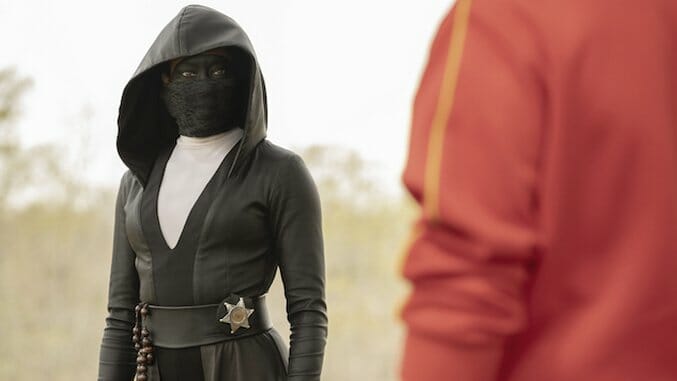
Alan Moore and Dave Gibbons’ graphic novel Watchmen, like Fight Club and Starship Troopers, has a knack for getting itself misunderstood. Frankly, that’s mostly because white guys in the demographic that usually watches this kind of thing are used to a certain kind of messaging and a certain status quo interpretation. Action heroes kill stuff. It’s awesome. Rah, rah, violence. Move along, see the sequel in a year. Past behavior is hard to escape; it’s also hard to criticize without accidentally dipping back into old habits. Watchmen’s HBO sequel series from Damon Lindelof isn’t perfect in this regard, but it’s easy to watch, tough to pin down, and well worth working through.
The show becomes more and more about the traumas suffered by our progenitors, how they’ve lived on through us, and how we respond to their effects. It susses out the ways the government would attempt reparations for black Americans robbed of historical wealth—including the racist backlash against and cringe-inducing videos used to inform those receiving them. This applies to oppression and inequality, sure, but an entire episode digs into the 9/11-like aftershocks resonating into the American psyche from Ozymandius’ space squid drop on NYC. The past comes for everyone in the show.
Unlike some other prestige TV with muddled messaging, Watchmen doesn’t leave you feeling empty. The thematic throughline of the past’s haunting echoes and tangible consequences can get hammy at times, but it’s still a fascinating concept for a sequel series that nobody asked for. Clever, mean, blood-in-the-mouth humor meshes with politics warped and wild in this alt-present where Robert Redford is president and peace was forced upon the world by a murderous genius. Coping with this reality, moving on from the sins of the past, and figuring out how to find a just future—that’s a journey riddled with pitfalls, but one Watchmen makes irresistible. —Jacob Oller
3. When They See Us, Netflix
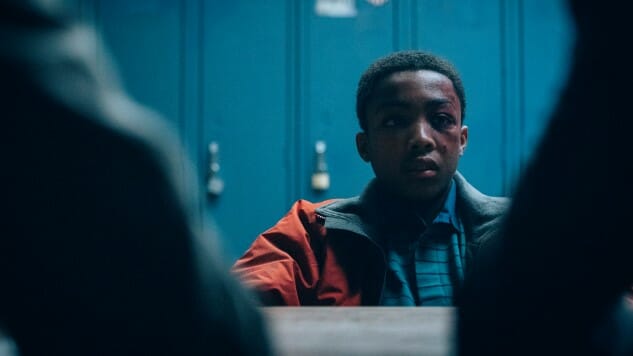
Antron McCray. Kevin Richardson. Yusef Salaam. Raymond Santana. Korey Wise.
I will admit that up until When They See Us, Ava DuVernay’s searing four-part miniseries, I knew these men as only the “Central Park Five.” That they were, to me, first the perpetrators of a horrific crime and later exonerated victims of a racist and rigged legal system. But you cannot look away from When They See Us or shelter yourself from the blinding truth. The harrowing episodes will leave you devastated yet in awe of how McCray, Richardson, Salaam, Santana and Wise came out on the other side of what happened to them to lead happy, productive lives today. The story itself is overwhelmingly powerful. But there are several key decisions DuVernay makes that turns When They See Us into one of the year’s, if not the decade’s, best programs. One is the casting of five relatively unknown actors to play the boys. The “Central Park Five” were 14-16 years old in 1989 and Marquis Rodriguez, Ethan Herisse, Jharrel Jerome, Asante Blackk and Caleel Harris not only look young but portray the absolutely vulnerability and fear that their real-life counterparts must have felt. The devastating fourth episode is a tour-de-force performance for Jerome, the only actor to play both the younger and older version of his character. In this traumatic hour, Jerome is nothing short of phenomenal. When They See Us is exceedingly difficult to watch; it cut me to my very core. When you see it, I’m sure it will do the same to you.—Amy Amatangelo
2. Unbelievable, Netflix
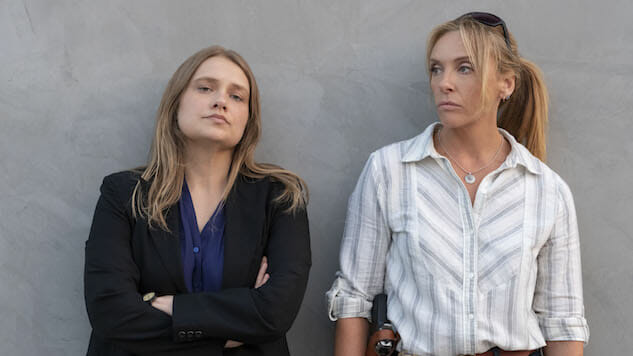
There’s something quietly revolutionary about Unbelievable. It is difficult to watch at times, the kind of series likely to live with you long after its final moments come to a close; for a story centered on rape, that is hardly unusual. The work of its three remarkable lead actors (Toni Collette, Merritt Wever, and Kaitlyn Dever) is wonderful but also not unique; other television shows and movies have hired exceptional performers to tell these stories. Instead, Unbelievable distinguishes itself by the simple act of making one very big assumption: that everyone watching already knows that rape is a horrific violation. It assumes you’ve got that handled. It assumes that you’ve seen The Handmaid’s Tale or Boys Don’t Cry, or most recently, The Nightingale, and have plenty of experience seeing rape depicted in media in visceral, nightmarish fashion. It is fully aware that of the people on the other side of the screen one in six women and one in 33 men will have personally experienced a rape or an attempted rape in their lives. It has absolutely no interest in immersing its audience in trauma and violation. Unbelievable knows that you know rape is bad. It does not act as a voyeur. Under the guidance of showrunner Susannah Grant, it is far more interested in the survivor’s perspective—on what happened to her, yes, and how it lingers, but also on the violations that came after.
Based on a Pulitzer-winning piece of journalism by T. Christian Miller and Ken Armstrong (of ProPublica and The Marshall Project, respectively), Unbelievable is a series of such quiet power that its full impact may not come crashing down until after its powerful conclusion. —Allison Shoemaker
1. Chernobyl, HBO
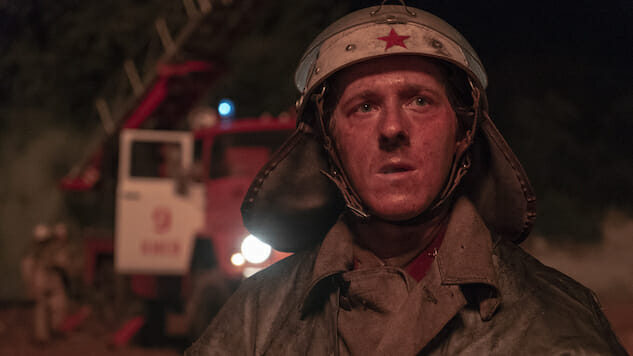
Maybe this is a good time for a drama about Chernobyl. I mean, as it becomes increasingly tempting to give in to apocalyptic ideation, I guess it’s useful to remember that the apocalypse already happened, and not even that long ago (I was a teenager and remember it vividly), and we apparently survived it.
In April 1986, the reactor at the Chernobyl nuclear power plant, in present-day Ukraine, exploded, leaving a large number of first-responder widows and a legacy of environmental annihilation. The incident and its aftermath are the subject of a new, five-part drama on HBO. Let me start by saying people with mood disorders should weigh the pros and cons carefully before tuning in: It’s possibly the worst thing I have ever seen on TV. And I don’t mean poorly done. (It’s unfortunately brilliant). I mean Chernobyl is devastatingly realistic and really, really painful, so be prepared for graphic depictions of what it’s like to die of radiation poisoning. Or what it’s like to be recruited to the task force that has to destroy radioactive housecats, milk cows and puppies. I literally couldn’t sit through the first episode. I had to watch it 10 minutes at a time.
The outstanding cast is led by Stellan Skarsgård as Boris Scherbina, a Kremlin apparatchik, and Jared Harris as Valery Legasov, the nuclear physicist who makes the government understand they cannot lie and obfuscate their way out of a nuclear disaster. Emily Watson rounds it out as Ulana Komyuk, a Byelorussian scientist determined to find out what really happened in order to keep it from ever happening again. The production is HBO-grade excellent. The soundtrack is a testament to the terrifying sound of a chattering Geiger counter. Writer and producer Craig Mazin is relentless in his depiction of human corruption and environmental breakdown, and director Johan Renck gives Lars von Trier a run for his melancholic money. It is an anatomy of fear and incompetence and hopelessness and baseness and self-destructiveness. It is desolate and desperate and excruciating and horrible. Horrible. Horrible. And it should be. —Amy Glynn
For all the latest TV news, reviews, lists and features, follow @Paste_TV.